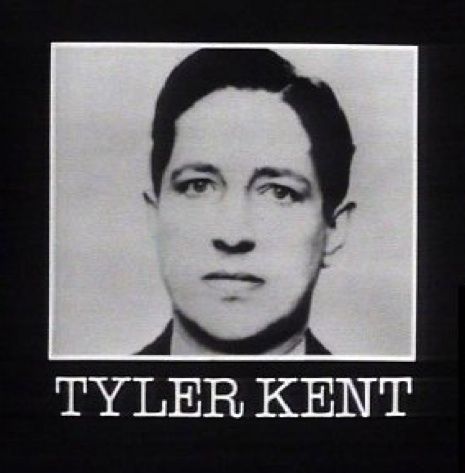
Moon Unit Zappa, eat your heart out: It’s being said ‘round the Internets that this letter, dated September 9, 1917 by Lord John Fisher to Winston Churchill, is one of the first documented uses of the teenybopper expression “OMG!”

Moon Unit Zappa, eat your heart out: It’s being said ‘round the Internets that this letter, dated September 9, 1917 by Lord John Fisher to Winston Churchill, is one of the first documented uses of the teenybopper expression “OMG!”

Fantastic portrait of comics magus Alan Moore by Frank Quitely. If you click here, you can see a much larger version of the piece and you’ll notice that Quitely did a “Hirschfeld” and wove titles from Moore’s oeuvre into his beard.
Below, an amusing segment with Moore from Stewart Lee’s Comedy Vehicle as they discuss the truth about Winston Churchill…

Famed British documentarian, Adam Curtis, has been keeping an absolutely wonderful, quirky, must-read blog on the BBC’s website. Often Curtis will post long forgotten TV documentaries and news clips from the Beeb’s archives. Recently, he put up a nearly forgotten piece of history, one that’s particularly relevant again with the Wikileaks scandal currently occupying the government, the news media and chattering classes and which provides a unique bit of perspective… on several fronts:
Bradley Manning, the intelligence analyst who is alleged to have leaked the thousands of state department cables, has often been compared to Daniel Ellsberg who leaked the Pentagon Papers in 1971.
But I have stumbled on a film in the archives that tells the story of another leaker in America who tried to do the same thing, but even earlier.
He was a young State Department diplomat who stole and copied thousands of Top Secret cables. Like Daniel Ellsberg, his aim was to release them to stop America’s involvement in what he believed was a disastrous foreign war.
He was called Tyler Kent. He was a diplomat at the US embassy in London in 1940 and he wanted to stop President Roosevelt bringing America into the war to help Britain.
It is a fascinating story, but it also brings an odd perspective to the contemporary Wikileaks story.
Tyler Kent was a horrible man. He was a rabid anti-communist who believed that the Jews had been behind the Russian Revolution.
He was convinced that Germany should be allowed to destroy both Communist Russia and the Jews. And America should not get in the way of that being allowed to happen.
Looking back, most people now feel that Daniel Ellsberg was right in 1971 because the Vietnam War had become a horrible disaster that needed exposing.
Today, we are not sure of Bradley Manning’s motives (and it hasn’t been proven that he is the source of the leak), but again there is a general feeling that it was good thing because the cables have exposed an empty nihilism at the heart of America’s foreign policy.
But the perspective the Tyler Kent story brings is the realisation that diplomatic leaks are not automatically a good thing. It just depends on who is using them. And why.
Tyler Kent secreted away nearly 2000 cables between then First Lord of the Admiralty, Winston Chruchill and President Franklin Roosevelt. If the cables would have been made public (Kent’s idea was to share them with Senators who shared his isolationist views) the American people—80% were against entering WWII—might not have re-elected Roosevelt. Who knows how this one twisted freak could have altered the course of history?
Tyler Kent was tried and convicted to seven years in prison (Malcolm Muggeridge was at the trial representing MI6). Oddly, the State Department did not attempt to prosecute him for working as a Nazi spy. Eventually he was deported back to the US, where he married a wealthy woman and started a newspaper with ties to the Ku Klux Klan. Kent died, bitter, broke, weird—and an unrepentant anti-Semite—in a trailer park near the Mexican border in 1988. A BBC Newsnight journalist tracked Kent down in 1982 and interviewed him. You watch the report at Curtis’s blog, The Medium and the Message.